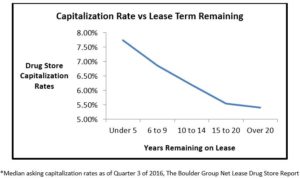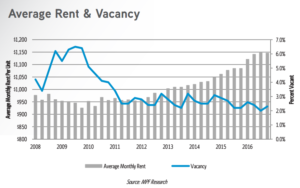Dude, Where’s My Premium? The S Corporation Premium After the Tax Cuts and Jobs Act
By: Cody J. Lindman
On December 22, 2017, President Trump signed the Tax Cuts and Jobs Act (TCJA) into law, the largest reform of the U.S. tax code since President Reagan’s Tax Reform Act of 1986. For the purposes of this article, the most important change to the U.S. tax code is the reduction in corporate and individual income tax rates. With respect to taxation, the U.S. tax code does not treat the income earned by C Corporations and S Corporations (Pass-Through Entities) equally. Instead, income earned by C Corporations is taxed once at the corporate level and then again when the income is distributed to shareholders. Contrary to C Corporations, S Corporation income flows through to a shareholder’s individual tax return, where it is then taxed at the shareholder’s individual income tax rate. Due to the previously explained differences in taxation for C and S Corporations, a theoretical value premium or discount exists. This premium or discount is known as the “S Corporation Premium” in the business valuation community.
Background
The theory behind the application of an S Corporation Premium is that a shareholder in an
S Corporation can make discretionary distributions (distributions beyond those necessary to pay shareholder level taxes) tax free at the corporate level. In contrast, discretionary distributions in
C Corporations are made after corporate taxes are paid and are then subject to income tax a second time at the shareholder level.
However, income retained by the C Corporation is not subject to income tax a second time at the individual level – only those net proceeds which are distributed to the shareholders. This is an important distinction because of the rhetoric related to C Corporation values versus S Corporation values. It is often thought that C Corporations are “taxed twice” and S Corporations are “taxed once.” This view is too simplistic however and results in an inaccurate assessment of the taxation differences between C and S Corporations.
In most businesses, the variable level of taxes discussed above creates a theoretical range of
S Corporation value premiums (or discounts). Only when 100% of taxable income is distributed by the C Corporation is there true ‘double taxation’ because then there are no retained earnings. We note however that if an S Corporation is distributing income below the shareholder tax rate, a negative S Corporation Premium (a discount) may be appropriate. At Shenehon Company, we consider each S Corporation on a case by case basis when applying an S Corporation Premium.
The S Corporation Premium Under the Prior Tax Law
To determine the S Corporation Premium under the prior tax law, the applicable tax rates for C and S Corporations must be calculated. In the charts on the following page, we calculated the marginal tax rates for C and S Corporations, noting that these tax rates are calculated using a specific set of assumptions and that the tax rates used may not be applicable for every business.
The chart below illustrates the calculation of the S Corporation Premium under the prior tax law using the assumptions of a 40.0% C Corporation tax rate, a 20.0% C Corporation dividend tax rate, and a 43.0% S Corporation (Pass-Through Entity) tax rate.
Therefore, the aforementioned assumptions result in an S Corporation having a theoretical value premium ranging from a high of 18.8% for an S Corporation distributing 100.00% of its taxable income to a low of -5.0% (a 5.0% discount) for an S Corporation distributing 40.00% or less of its taxable income.
The S Corporation Premium After the Tax Cuts and Jobs Act
The signing of the TCJA brought forth a myriad of changes to the U.S. tax code. For our purposes however, one of the main changes precipitated by the TCJA was the reduction in the top marginal tax rate for C Corporations from 35.0% to 21.0%. Additionally, the top marginal tax rate for individuals was reduced from 39.6% to 37.0%, individuals are now limited to $10,000 in state and local tax deductions, and S Corporations are able to deduct 20% of “Qualified Business Income.” “Qualified Business Income” is vaguely defined as “…the net amount of qualified items of income, gain, deduction, and loss with respect to any qualified trade or business of the taxpayer.” For the purposes of this article, we will consider all of the income in the following charts to be “Qualified Business Income.”
To determine the S Corporation Premium after the TCJA, the applicable tax rates for C and S Corporations must be re-calculated. We calculated a combined marginal tax rate for
C Corporations of 27.0% and a combined marginal tax rate for S Corporations of 35.0% after the TCJA, as illustrated in the charts below.
The chart below illustrates the calculation of the S Corporation Premium after the signing of the TCJA using a 27.0% C Corporation tax rate, a 20.0% C Corporation dividend tax rate, and a 35.0% S Corporation (Pass-Through Entity) tax rate.
Therefore, the aforementioned assumptions result in an S Corporation having a theoretical value premium ranging from a high of 11.3% for an S Corporation distributing 100.00% of its taxable income to a low of -11.0% (an 11.0% discount) for an S Corporation distributing 27.00% or less of its taxable income.
Final Thoughts
Despite falling short of President Trump’s initial goal of simplifying the U.S. tax code, the TCJA was successful in narrowing the taxation gap between C Corporations and S Corporations (Pass-Through Entities), as evidenced by the previous charts illustrating the decline of the
S Corporation Premium. For example, under the prior tax law, an S Corporation distributing 100% of its taxable income would have a theoretical S Corporation Premium of approximately 18.8%. However, after the signing of the TCJA, the theoretical S Corporation Premium for the same entity is reduced to approximately 11.3%. We note however that the previous charts were created using a specific set of assumptions about C and S Corporation tax rates and that the tax rates used may not be applicable to every business. Regardless, the key takeaway from this article is that the S Corporation Premium decreased after the TCJA.

 If tenant renewal is uncertain, the demand for that property will decrease due to the risk of vacancy. This results in a lower market value of the property and a higher capitalization rate. The graphic illustrates this principle:
If tenant renewal is uncertain, the demand for that property will decrease due to the risk of vacancy. This results in a lower market value of the property and a higher capitalization rate. The graphic illustrates this principle: historic lows. This has been going on for several years, with vacancy rates declining sharply in 2010 and 2011, followed by a steady decline through 2016. Responding to tightening vacancy rates, rental rates have trended steadily upwards since 2011, as seen in the chart provided by Colliers.
historic lows. This has been going on for several years, with vacancy rates declining sharply in 2010 and 2011, followed by a steady decline through 2016. Responding to tightening vacancy rates, rental rates have trended steadily upwards since 2011, as seen in the chart provided by Colliers.